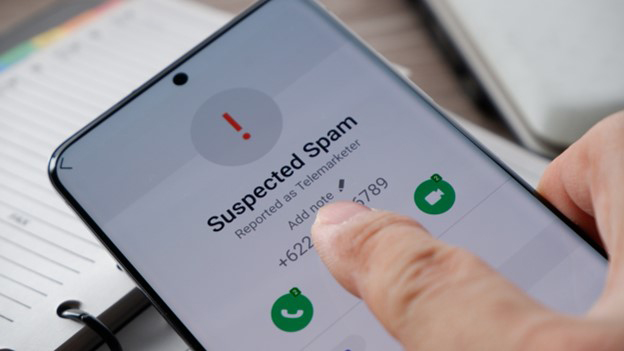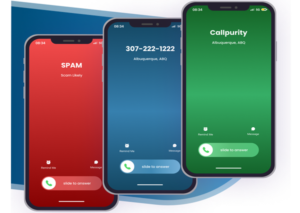With the number of unwanted calls from unknown numbers steadily increasing for Americans, the immediate response for most mobile users in the U.S. is to immediately silence any incoming calls from unknown callers. With the latest data showing that 86% of Americans choose not to answer any incoming call from phone numbers that they can’t identify, blocking calls from numbers that aren’t recognized or in the phone owner’s contact list almost seems to be a new American pastime.
With so many choosing to silence unknown callers for fear of potential spam or due to their phone’s Caller ID labeling a phone number as a SPAM call, SCAM likely, or telemarketer, there is a very pertinent question that needs to be answered: are potential spam calls always spam?
The answer may surprise you.
What Are Potential Spam Calls?
Potential spam phone calls may be unwanted calls that appear to come from telemarketers, scammers, or other companies that may be selling products or services that are either unwanted or illegitimate. Companies that use spam calls as a tactic often have automated systems that randomly dial phone numbers with a prerecorded message that attempts to promote their offerings.
A phone carrier may label a phone number as a potential spam call if that number has been reported by users as one that is originating spam calls, has been reported to a government database, or the carrier’s machine learning system has identified it as potential spam for another reason (like placing too many calls or placing calls too quickly).
This can be helpful in an attempt to block spam calls and scam calls that are greatly increasing in number and frequency, but it can also backfire and mislabel legitimate companies as spam numbers for various reasons, which we will describe below.
How Do Spam Calls Work?
There are many different types of spam calls, and each has its own perpetrators, reasons for making the calls, and its own systems used for placing the calls. Billions of calls are placed every single day, and the technology available for spammers makes it increasingly difficult to detect spam calls versus legitimate ones. This allows the spammers and scammers to often find ways around any spam filter, spam protection, or app to block spam shortly after it is launched.
To help you better understand how to protect yourself against a spam caller and potential scams, let’s go through some of the reasons someone may place a spam call in the first place.
What’s the Difference Between a Spam Call and a Scam Call?
While there is a difference in the definition between a spam call and a scam call, the two can often be inexorably linked. A successful phone scam often requires the perpetrator to call a large number of people until they find one or more who are willing to fall for their ruse.
In essence, many scammers will spam call a large number of phones until they find someone who falls for their scam. There are also targeted scammers who focus on a specific individual or business name, whether they be hackers, phishers using social engineering to gain access to someone’s accounts, and even activists trying to gain access to government or business information.
Spam Call
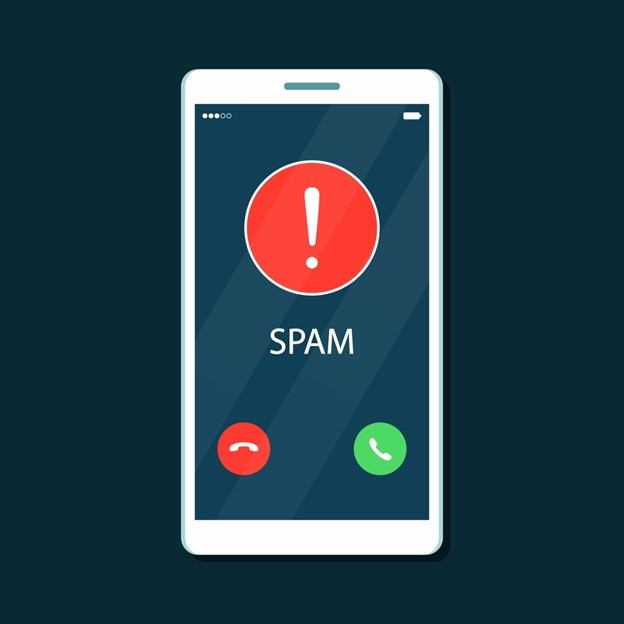
Scam Call
Scam calls are calls made with the purpose of trying to scam people out of their money or personal information. There are many forms of various scam calls, and each has its own tactics, purposes, and perpetrators. We will outline some of the different forms of scam calls below, as well as how to protect yourself from scammers.
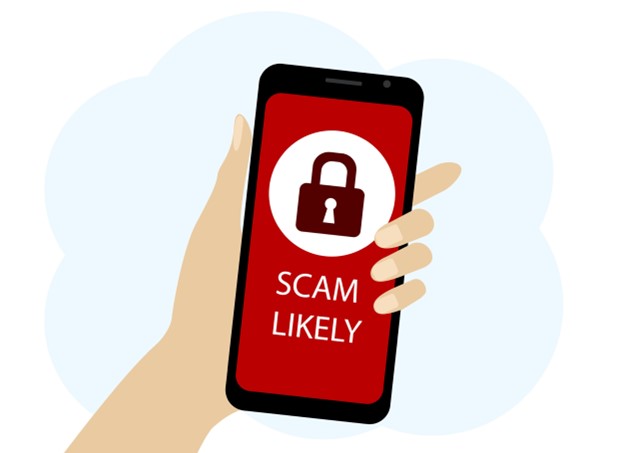
Types of Spam and Scam Callers
While the list of scams and spam callers is constantly growing, some of the more prevalent forms of these calls are listed below.
Telemarketers
Telemarketing is a legitimate, lucrative, and relatively old marketing practice that makes money by calling potential customers and trying to sell them products or services. Telemarketers may call a particular number because the phone owner provided it when they signed up for something else, or because their phone number was purchased as “list data” from data brokers based on that person’s potential interest in what the telemarketer is selling.
Although there are many legitimate telemarketing companies, some phone users today may report and label their number as a spam call simply because they are annoyed or don’t want to hear from the company again. The telemarketer can also be labeled as spam likely for a variety of other reasons, such as placing too many calls too quickly, or calling the same number too many times if the owner doesn’t answer their calls.
Legitimate Information Collection
Because 95% of the population owns some kind of cellular phone, they are a great way to reach a large number of people when needed. There are some unwanted calls that are legitimate organizations attempting to collect information from different segments of people located across the country. One example of such calls would be a company conducting surveys, either for political or marketing purposes.
In order for a survey to be accurate on a national level, they need to contact a certain number of people from different demographics and regions across the country. This allows them to detail records of political affiliation from region to region, national demographic information, or shifting consumer preferences. Rather than setting up physical locations or sending out letters across the country, some organizations opt to simply call people to ask them prewritten questions that they are seeking answers to.
Phishing Attempts
Many savvy internet users know the term phishing from email, social media, or online forums, but phone phishing existed before internet usage was even widespread. Spam or scam callers use phishing as a form of social engineering to elicit personal information like passwords, birthdays, social security numbers, or anything else that can grant them access to your accounts.
Some of the more popular phishing tactics are for spam or scam callers to impersonate a government employee or official from the IRS, law enforcement, or even a utility company. Even though they initiate the call, they will tell the caller that they need to verify their identity to prevent something bad from happening (power being shut off, IRS audit, etc).
If trying to gain access directly to a person’s online accounts, these scammers may impersonate an IT representative from a popular technology company like Microsoft or Apple. If they can convince the target to provide them access directly to their computer, phone, or devices, or to download a program that they send, they can place malicious software or a keylogger to sneak into their financial accounts and take their money.
It can never be stated enough that legitimate companies and government employees should never call you and ask for your personal or payment information, and those organizations’ names should be clearly displayed on your Caller ID if they are the true location of the call origin.
Despite these calls often coming from unknown callers, modern scammers and phishing attempts may use a phone app or VOIP for call spoofing to provide a fraudulent Caller ID. To make it worse, these scammers often target the elderly who are less familiar with the technology.
Scammers & Potential Fraud
As outlined above, there are many different types of phone-based scams at work today. Phone users have taken to using phone apps to reduce their spam risk or to silence junk callers, but the advent of Caller ID spoofing allows competent scammers to edit how their call detail records appear so that these apps and phones don’t flag calls or label them as potential spam or scam likely.
Potential spam calls used for scams will often begin with a prerecorded message or music. This is because the automated system is placing a large number of calls, and will only connect to a live operator when someone answers the phone. Once they are connected to someone who will receive calls without hanging up, the live operator uses high-pressure tactics to get the person to provide personal or financial information.
They may impersonate someone from a government office, the bank, T-mobile, Verizon, or another phone carrier, and say that something bad will happen unless the call recipient provides their personal information for verification or financial information for payment. Some scammers will pose as telemarketers and pretend to be selling a great “time-sensitive” deal that only exists for that phone call, as a way to induce the target to provide payment without hesitation.
Automated Systems or Robocalls
Americans were receiving 4 billion robocalls per month in 2020, according to the Federal Communications Commission (FCC), and the number is increasing. The problem has become so bad that the FCC created a Robocall Response Team to combat the issue, with FCC Chairwoman Jessica Rosenworcel saying, “We’re not going to stop until we get robocallers, spoofers, and scammers off the line.”
When combined with Caller ID spoofing (making the incoming call appear on Caller ID as a legitimate business name), robocalling often uses automated systems to call multiple phone numbers simultaneously and evade apps & the settings from carriers or iPhone and Android devices that would block or mark calls as a spam risk or scam likely.
By spoofing phone numbers so the carriers and phones can’t identify them, these scammers simply call every phone number they can until they reach someone willing to answer, listen, and potentially be defrauded.
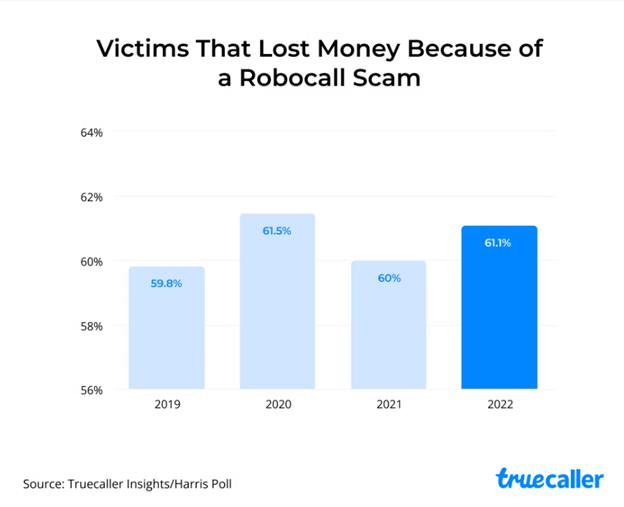
Protecting Yourself Against Potential Scams
Americans lost an estimated $39.5 billion dollars to phone scams in 2022, and the amount of money lost to these scams has been increasing every year. With that kind of money being made, scammers are willing to dedicate a large amount of time and resources to their fraudulent activities.
While the tactics, methods, and technology used in such calls change often, there are certain red flags that can help you to identify and protect yourself against the default methods often used.
● Don’t answer calls from unknown callers, allow them to go to voicemail.
● If something seems strange with a caller claiming to be from a legitimate company or organization, hang up and call them back using a valid number found on their website or on your latest bill if you do business with them.
● If a prerecorded call asks you to press a button or respond “yes” to stop receiving calls, just hang up. Scammers may use this to authorize charges on your phone number or target you as a live respondent.
● Be aware that recent calls from your local area code may not even be in the same country. Neighbor spoofing has become a major issue, in which a spam caller spoofs a number to mimic your area code.
● If any caller asks you to pay them with a gift card, it’s likely a scam. No legitimate business, law enforcement, or government agency will ask you to pay them with a gift card.
● Legitimate companies, government agencies, and law enforcement will never call you and demand personal or financial information.
● If you don’t recognize the company name the caller claims to represent, or they don’t want to answer questions about the company they work for, you may be dealing with a scammer.
● If someone initiates a phone call with you and begins using high-pressure sales tactics, you should be suspicious.
● A legitimate company will never leave you a voicemail and ask you to call them back to verify yourself.
● A company that you do business with should already have your personal and login information. Legitimate companies should never initiate a call with you and ask for these types of details.
● If someone initiates a call with you and begins asking irrelevant questions that have nothing to do with the topic you were discussing, be aware that it may be a phishing attempt.
● Non-U.S.-based scammers are prone to using poor grammar in their emails, texts, and phone calls.
Can Legitimate Calls Be Mislabeled as Spam Calls?
Not only can the phone numbers used by legitimate companies be mislabeled as a spam risk, scam likely, or telemarketer, but recent industry data shows that up to 25% of the numbers used by companies are likely to be mislabeled with these warnings at the telephone carrier level.
This can (and does) happen for any number of reasons, and will typically go unnoticed by the company making the outbound calls unless they use a service like Call Purity. If too many customers from a phone carrier block calls from a particular number, it is likely to be mislabeled, even if the number was spoofed by another illegitimate organization or some customers simply didn’t want to receive calls from you.
If your company depends on outbound marketing, call centers, or customers answering your calls, having your legitimate phone number marked with harmful carrier tags can be extremely detrimental. A recent industry study found that 2022 alone had twice as many legitimate business phone numbers mislabeled than had been between 2018 and 2022.
Based on the increasing number of phone scams and attempts by phone carriers and the government to stop these scammers, the number of legitimate numbers mislabeled is likely to double yet again in 2023.
Protect Your Business Phone Numbers, Increase Answer Rates, and Strengthen Your Brand with Call Purity
Our team of experts at Call Purity has over three decades of combined experience working in the Telecommunications, Unified Communications, and Call Center industries. That depth of experience has allowed us to forge the strongest relationships with all of the Tier 1 phone carriers in the industry. It has also given us a comprehensive understanding of how to best manage the health of our client’s call-based operations and legitimate business phone numbers.
As a result of our experience and relationships in the industry, our clients enjoy an average of only two days to remediate any business phone numbers that have been mislabeled with harmful carrier tags. Once our experts have remediated a phone number once, it is unlikely to be mislabeled again.
Working with our team at Call Purity allows our clients to be proactive with their branding as well. The root cause of declining answer rates and phone users’ being prone to silence unknown callers is their fear of receiving a scam or spam call. Our Pure Branded Caller ID solution allows clients to display their brand logo, the reason for calling, and a verified checkmark on both iPhone and Android devices, establishing trust with the call recipient and strengthening the brands of our clients in the process.
Our data shows that clients enjoy an up to 3x lift in answer rates when they begin using solutions from Call Purity, as potential customers no longer see their calls as potential spam or unknown calls. In a time when phone users have lost trust in any call they don’t recognize, Call Purity provides an option to restore that trust with every single phone call.
Trust matters. Begin building it from the first call with Callpurity.

